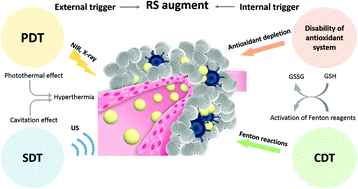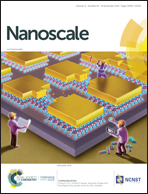Recent progress in the augmentation of reactive species with nanoplatforms for cancer therapy
Abstract
Reactive species (RS), mainly including reactive oxygen species (ROS) and reactive nitrogen species (RNS), are indispensable in a wide variety of biological processes. RS often have elevated levels in cancer cells and tumor microenvironments. They also have a dual effect on cancer: on the one hand, they promote pro-tumorigenic signaling to facilitate tumor survival and on the other hand, they promote antitumorigenic pathways to induce cell death. Excessive RS would disrupt the cellular redox homeostasis balance and show partiality as oxidants, which would cause irreversible damage to the adjacent biomolecules such as lipids, proteins and nucleic acids. The altered redox environment and the corresponding increased antioxidant capacity in cancer cells render the cells susceptible to RS-manipulated therapies, especially the augmentation of RS. With the rapid development of nanotechnology and nanomedicine, a large number of cancer therapeutic nanoplatforms have been developed to trigger RS overproduction by exogenous and/or endogenous stimulation. In this review, we highlighted the latest progress in the nanoplatforms designed for the augmentation of RS in cancer therapy. Nanoplatforms based on strategies including disabling the antioxidant defense system, photodynamic therapy (PDT), sonodynamic therapy (SDT), and chemodynamic therapy (CDT) were introduced. The crucial obstacles involved in these strategies, such as the light penetration limitation of PDT, relatively low RS release by SDT, and strict conditions of Fenton reaction-mediated CDT, were also discussed, and feasible solutions for improvement were proposed. Furthermore, synergistic therapies among individual therapeutic modalities such as chemotherapy, photothermal therapy, and RS-based dynamic therapies were overviewed, which contributed to achieving more optimal anticancer efficacy than linear addition. This review sheds light on the development of non-invasive cancer therapy based on RS manipulation and provides guidance for establishing promising cancer therapeutic platforms in clinical settings.

- This article is part of the themed collection: Recent Review Articles


 Please wait while we load your content...
Please wait while we load your content...